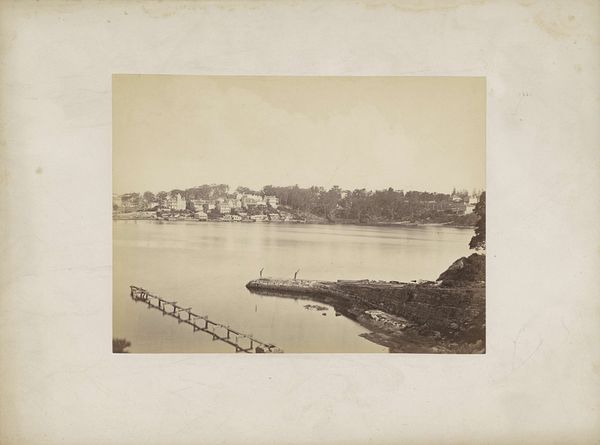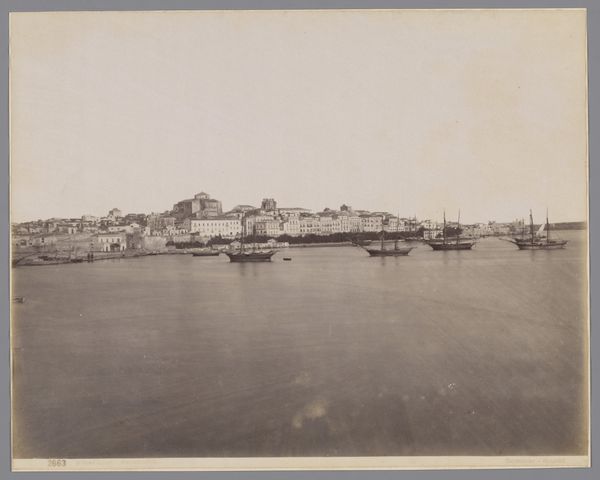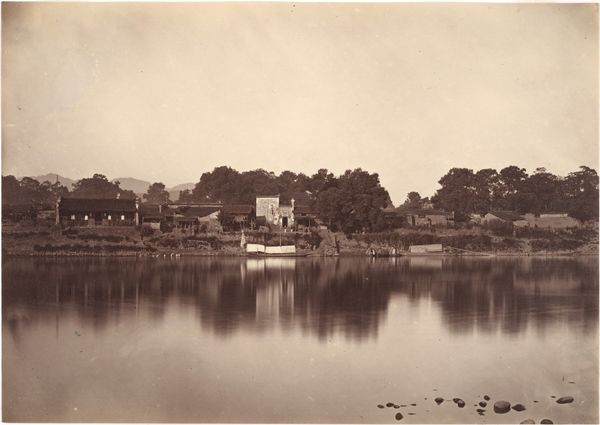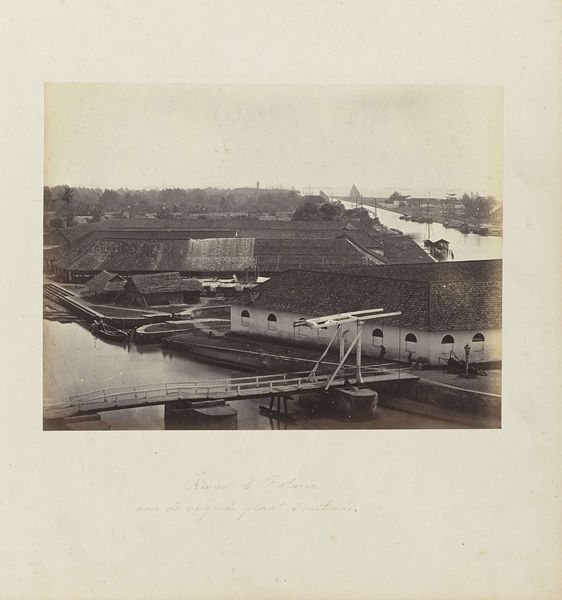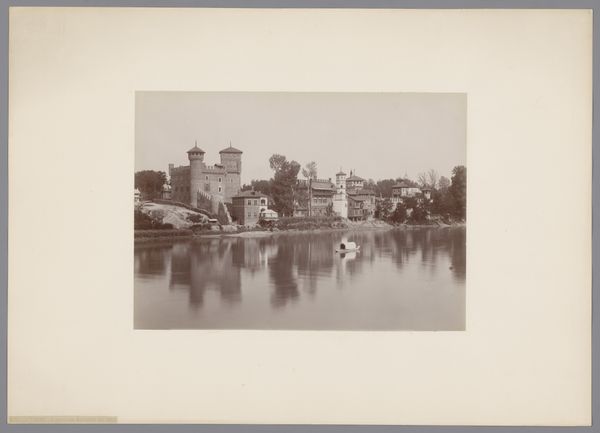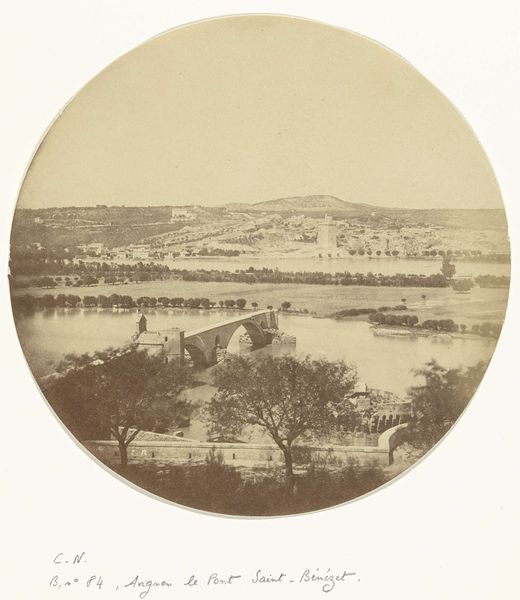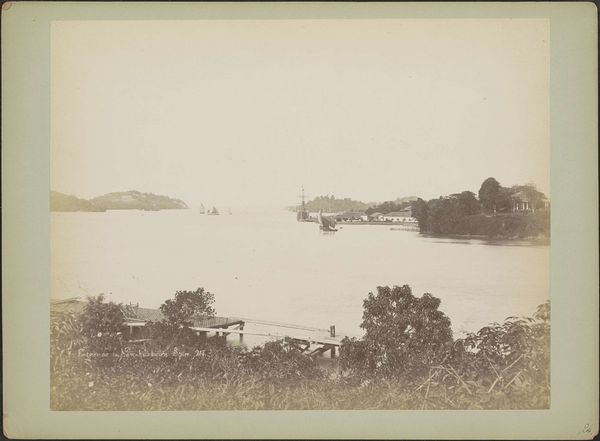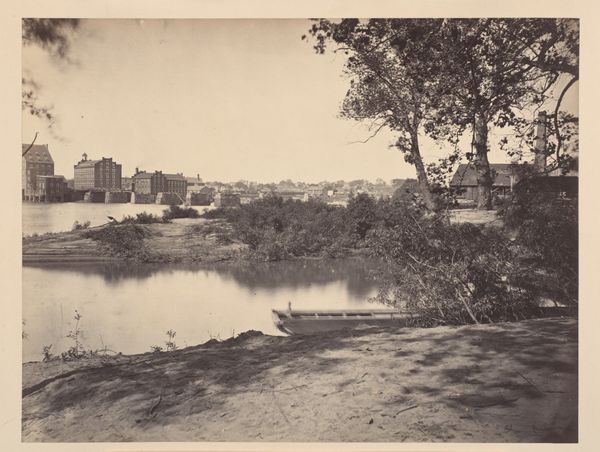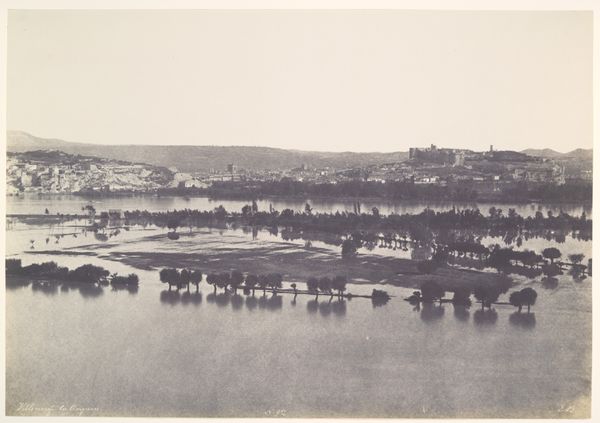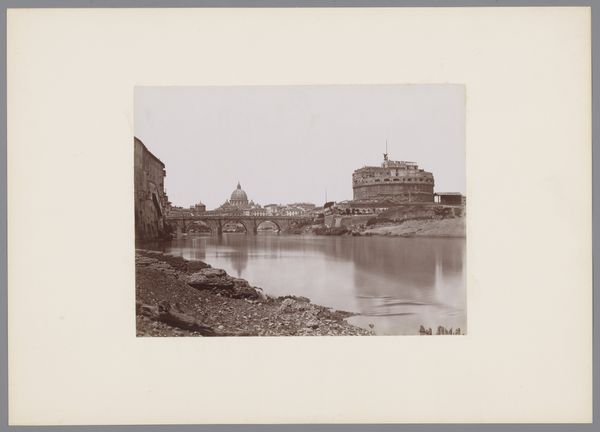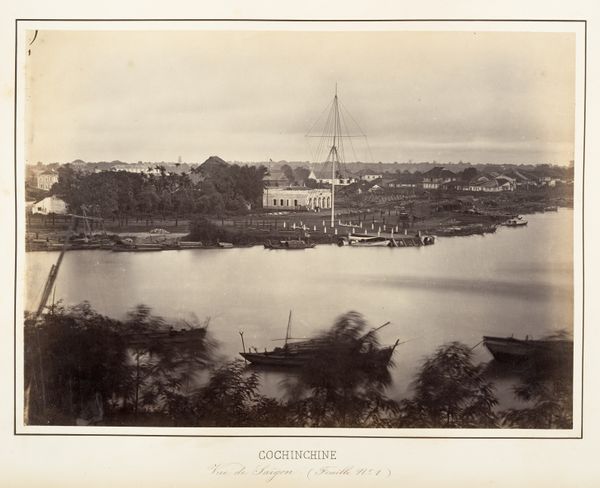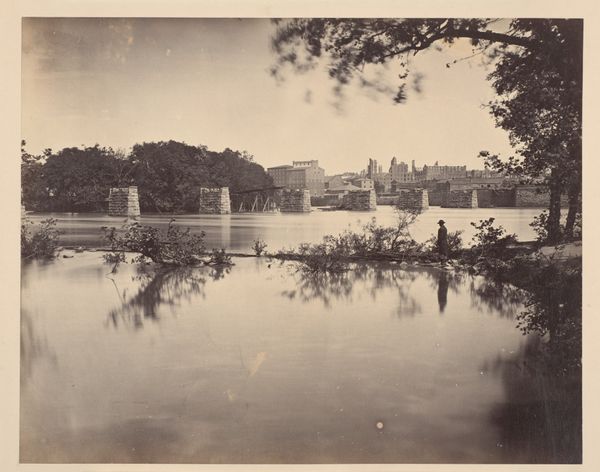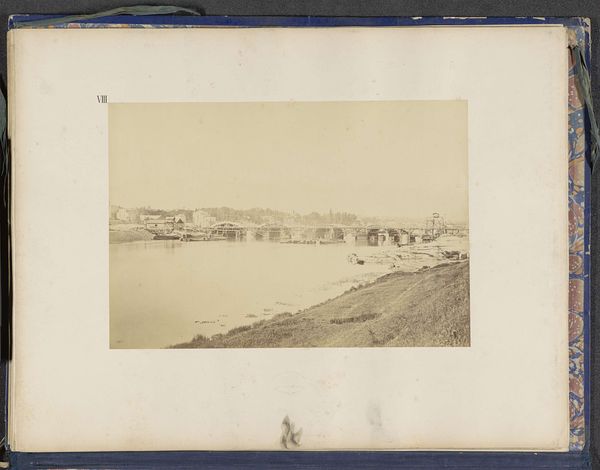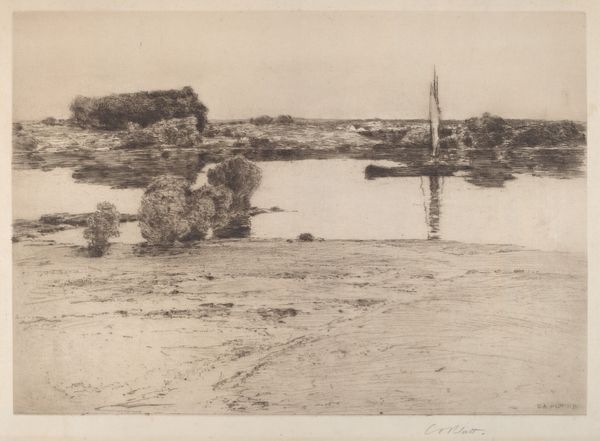![[Island of Philae] by John Beasley Greene](/_next/image?url=https%3A%2F%2Fd2w8kbdekdi1gv.cloudfront.net%2FeyJidWNrZXQiOiAiYXJ0ZXJhLWltYWdlcy1idWNrZXQiLCAia2V5IjogImFydHdvcmtzLzBmNTU3YTU0LTAyOTEtNGZjNy1hMjY2LTI5NmY3ZmJjMGE3My8wZjU1N2E1NC0wMjkxLTRmYzctYTI2Ni0yOTZmN2ZiYzBhNzNfZnVsbC5qcGciLCAiZWRpdHMiOiB7InJlc2l6ZSI6IHsid2lkdGgiOiAxOTIwLCAiaGVpZ2h0IjogMTkyMCwgImZpdCI6ICJpbnNpZGUifX19&w=3840&q=75)
photography, gelatin-silver-print
#
toned paper
#
landscape
#
ancient-egyptian-art
#
photography
#
ancient-mediterranean
#
gelatin-silver-print
Dimensions: 9 x 11 3/4
Copyright: Public Domain
Editor: Here we have John Beasley Greene's gelatin-silver print, "Island of Philae," created between 1853 and 1854. It evokes a sense of stillness, with its tranquil waters reflecting the ancient structures. The photograph also speaks to an era of European fascination with antiquity and archaeological expeditions. How does this particular image resonate with you in a broader historical context? Curator: This image provides valuable insights into how European photographers engaged with and represented Egyptian monuments during the mid-19th century. Greene, an American practicing in France, reflects the burgeoning field of Egyptology and its intersection with photographic technology. Photography played a critical role in documenting and disseminating information about Egyptian heritage, often serving a colonial gaze. What effect do you think the then-novelty of photography might have had on its perception of "truthfulness"? Editor: That's interesting to consider...maybe the novelty gave it an air of authenticity that shaped popular understandings. Now that I think about it, do you think that affects the political implications you just mentioned? Curator: Precisely! The seemingly objective nature of early photography reinforced existing power dynamics, allowing European powers to assert authority over the narrative and interpretation of Egyptian history. The wide circulation of these images created a particular visual culture which further popularized Egypt, while the locals were likely marginalized. Are you aware of any other ways this image may connect to the global sociopolitical conditions of the era? Editor: I'm starting to see how Greene’s “Island of Philae” transcends a simple landscape shot to reveal a complex tapestry of colonial power, technological innovation, and cultural representation. I appreciate how your analysis links aesthetics to sociopolitical factors. Curator: It's essential to remember that artworks exist not in a vacuum, but are always entangled within larger systems of power and knowledge. Analyzing visual culture, whether painting, photography, or any other medium, teaches us valuable lessons about how we perceive history.
Comments
No comments
Be the first to comment and join the conversation on the ultimate creative platform.
